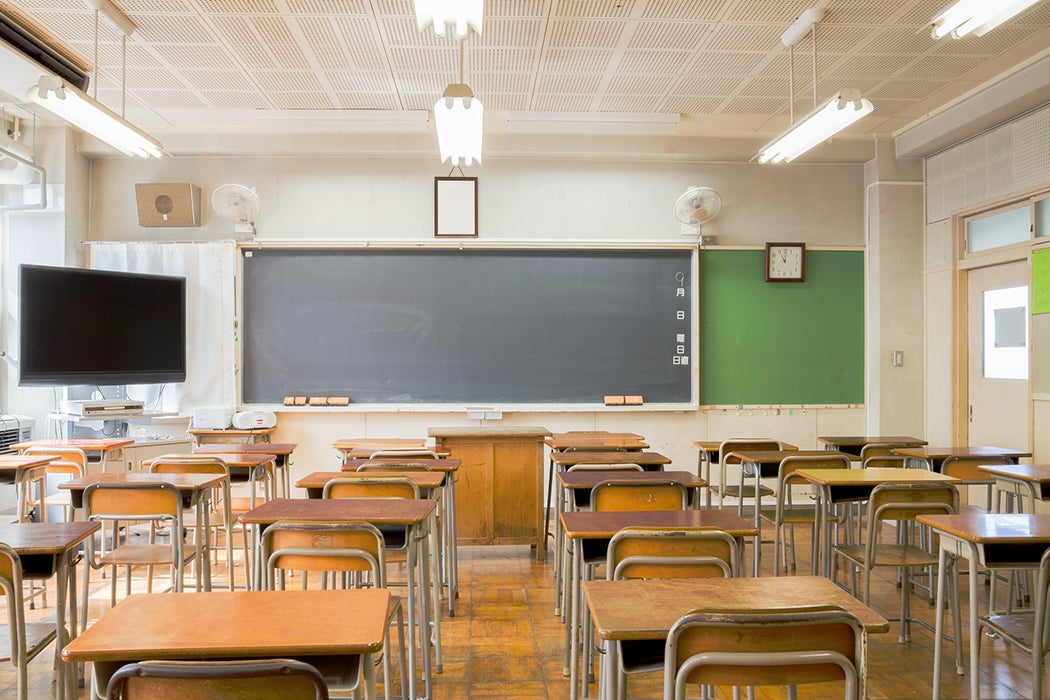What’s the most transformative piece of technology in U.S. classrooms? Smart boards? Laptops? In a 2000 paper on computers in education, Steven D. Krause argues that it’s one that’s been around for nearly two centuries: the blackboard. And he suggests that if we want to understand how teachers adopt technology, we might want to study its history.
To understand the impact of blackboards, Krause writes, we need to consider what schools were like before them. Around 1800, most U.S. schools were one-room log buildings with a fireplace at one end and a single window at the other. “Writing lessons” generally meant students working on their own, whittling goose-quill pens and copying out texts.
When the idea of chalkboards first arrived in the early nineteenth century, they came as a revelation to teachers and education experts. In 1841, one educator declared that the blackboard’s unknown inventor “deserves to be ranked among the best contributors to learning and science, if not among the greatest benefactors of mankind.” Around the same time, another writer praised blackboards for “reflecting the workings, character and quality of the individual mind.”
It’s important to remember that school budgets and student-teacher ratios in the early nineteenth century would seem ludicrous to a modern school district. One teacher might be responsible for hundreds of students, with very little funding for supplies.
Krause writes that one prominent way of using the blackboard to improve education under these circumstances was known as the Lancasterian method, after British educator John Lancaster. Lancaster prescribed particular ways of physically arranging the classroom so that a teacher could work with a large group all at once. Chalkboards, as well as wall charts, slates, and sand tables, were key to the method because they helped reduce the need to buy books, paper, and ink. A blackboard, which could be as simple as a wooden board painted black, let students and teachers demonstrate writing or math problems for the whole huge class.
The blackboard quickly became a “natural” part of education, Krause writes. A classroom wouldn’t look like a classroom without a chalkboard, or its close cousin, the white board. On the other hand, at least at the time Krause was writing, computers remained a bit exotic—something fun and flashy without an obvious way to contribute to learning activities. For new technology to be adopted, he argued, it needs to enhance the work teachers are already doing, not just create a new set of bells and whistles that they have to worry about. The relative price of computers compared with chalkboards was also an obstacle to widespread adoption.
Seventeen years after Krause’s paper, computers are cheaper than ever, and many teachers have found ways to use them to improve their classes. As this continues, the end result may be that—just like with the blackboard, electric lights, and all kinds of other innovations that were once revolutionary—we stop thinking of computers as “technology” at all.







